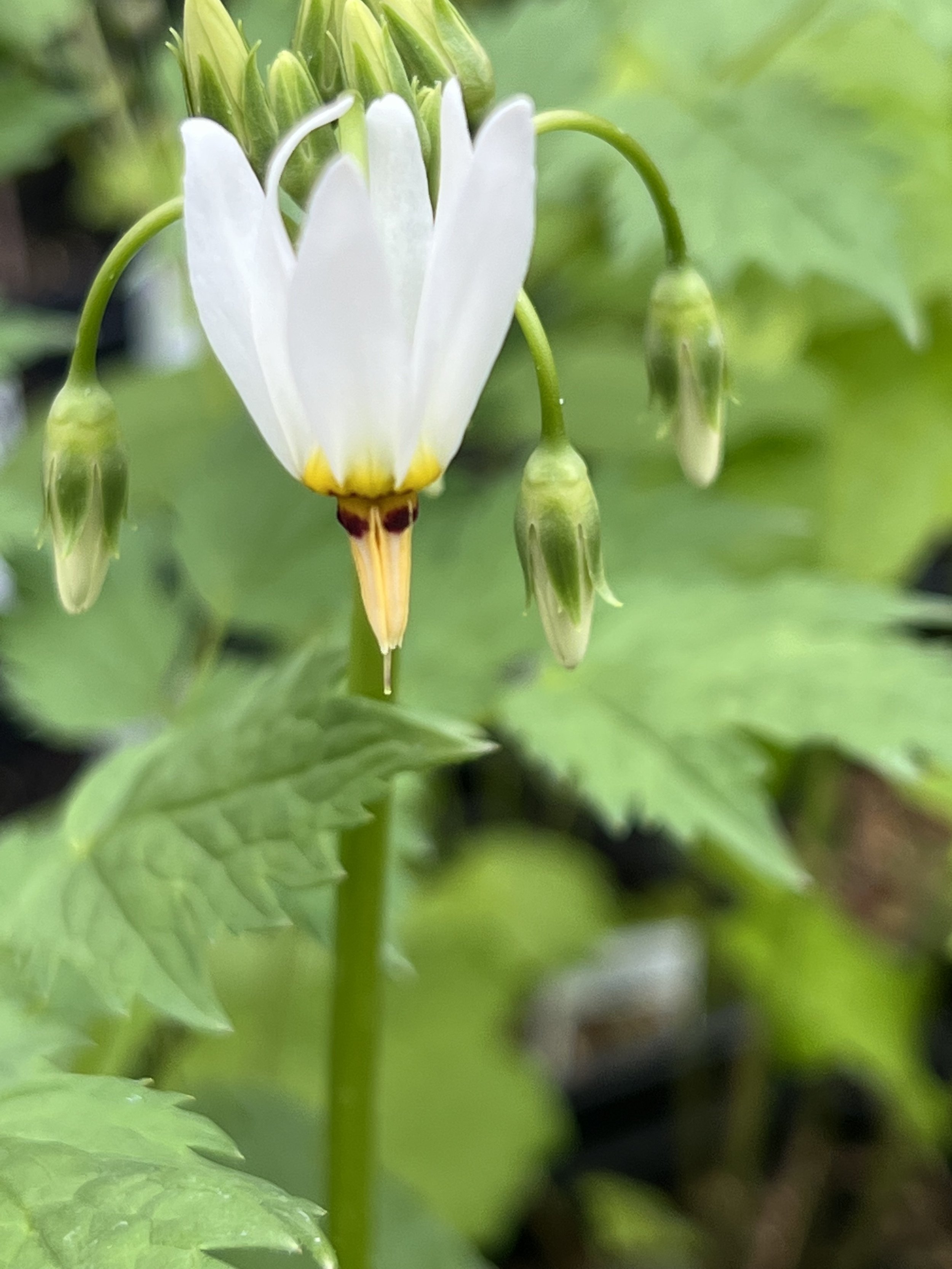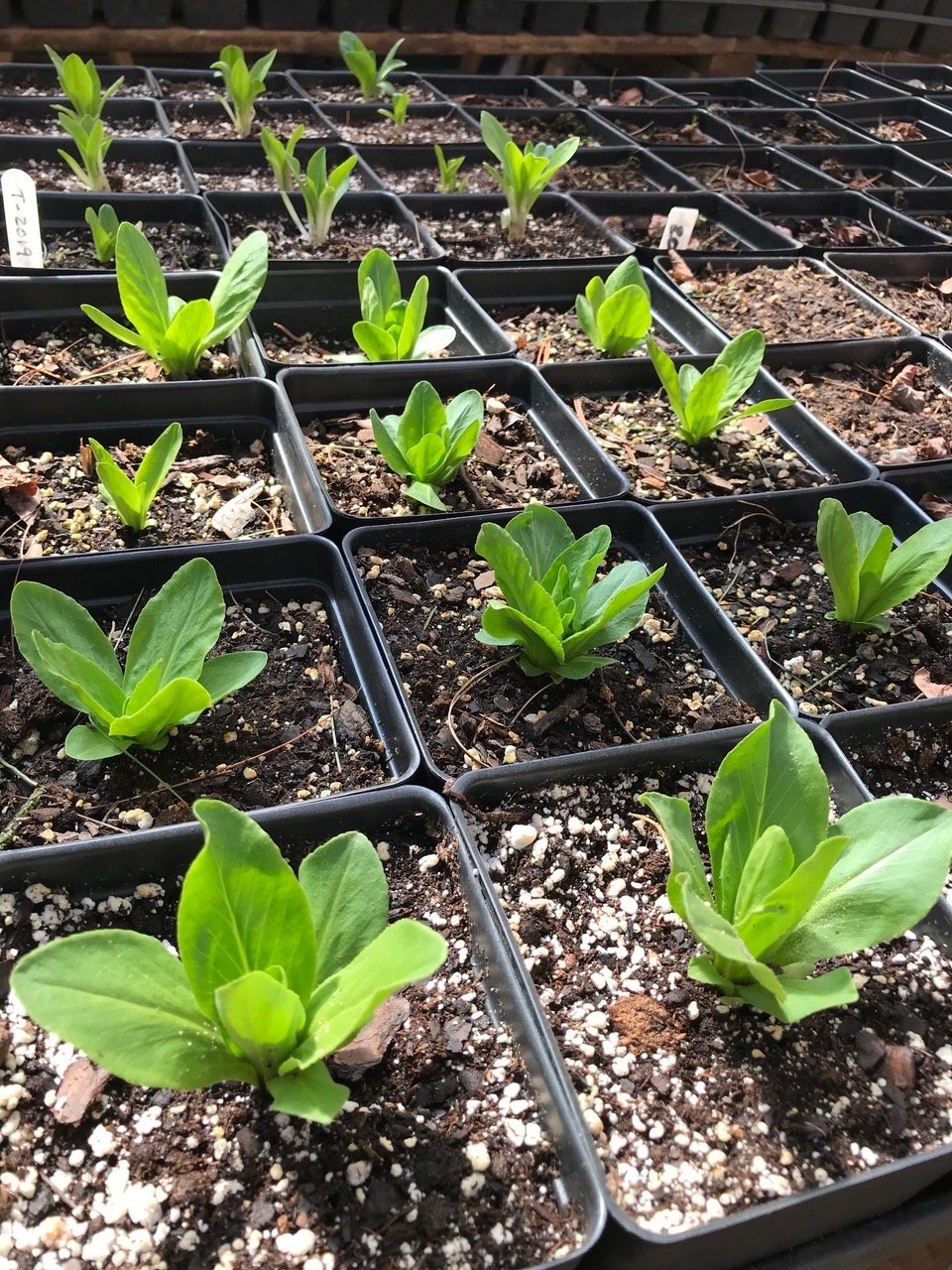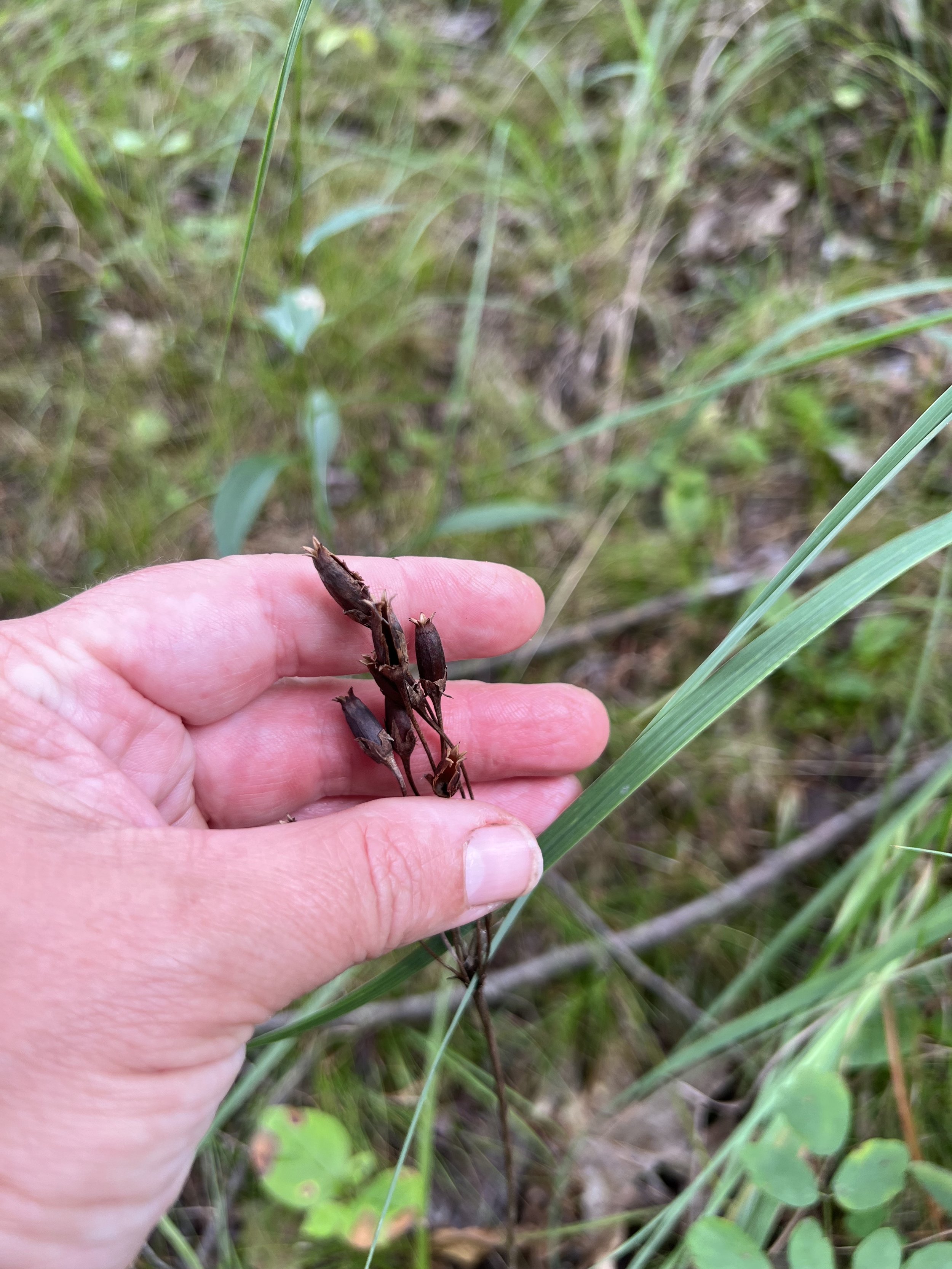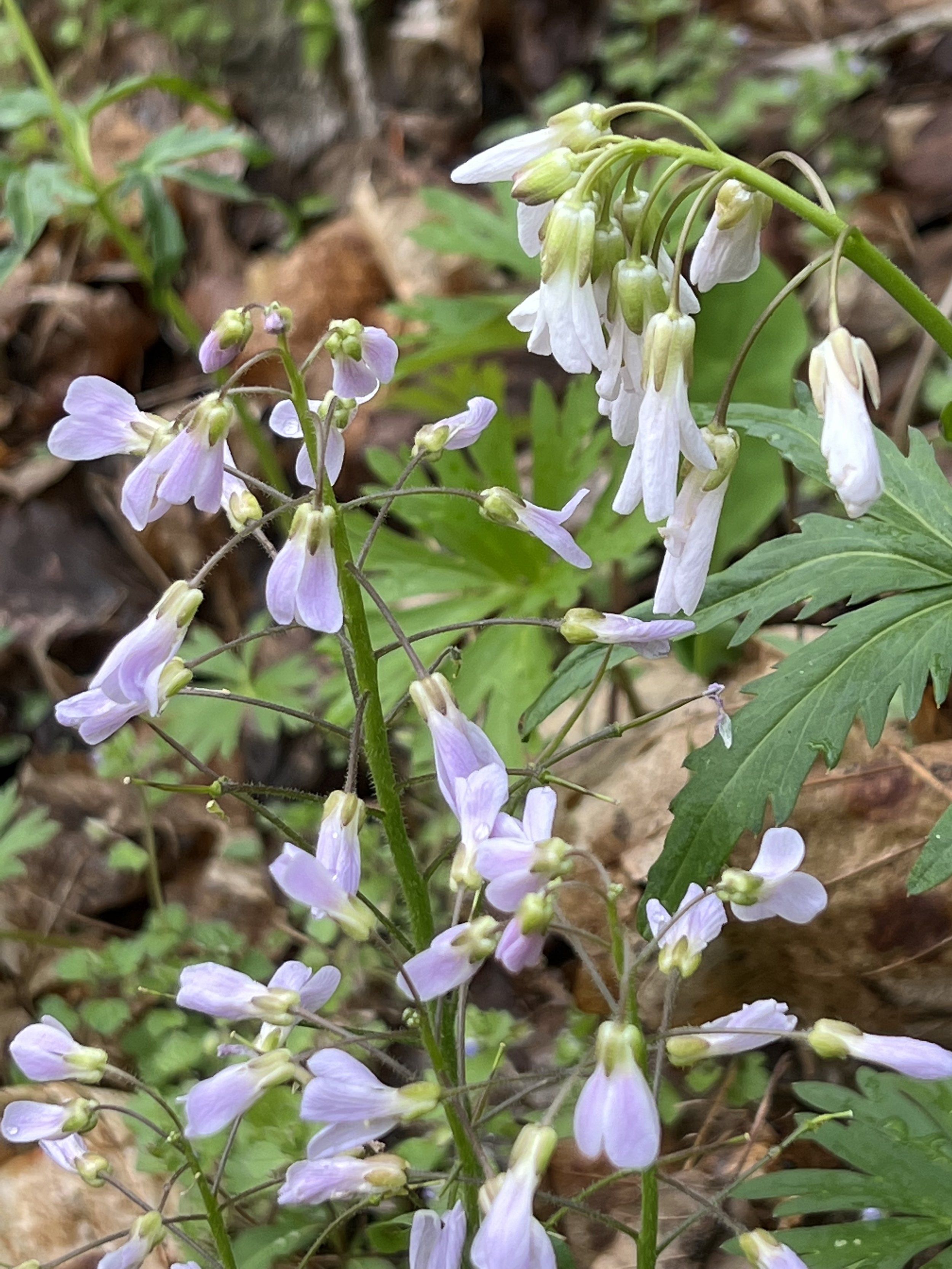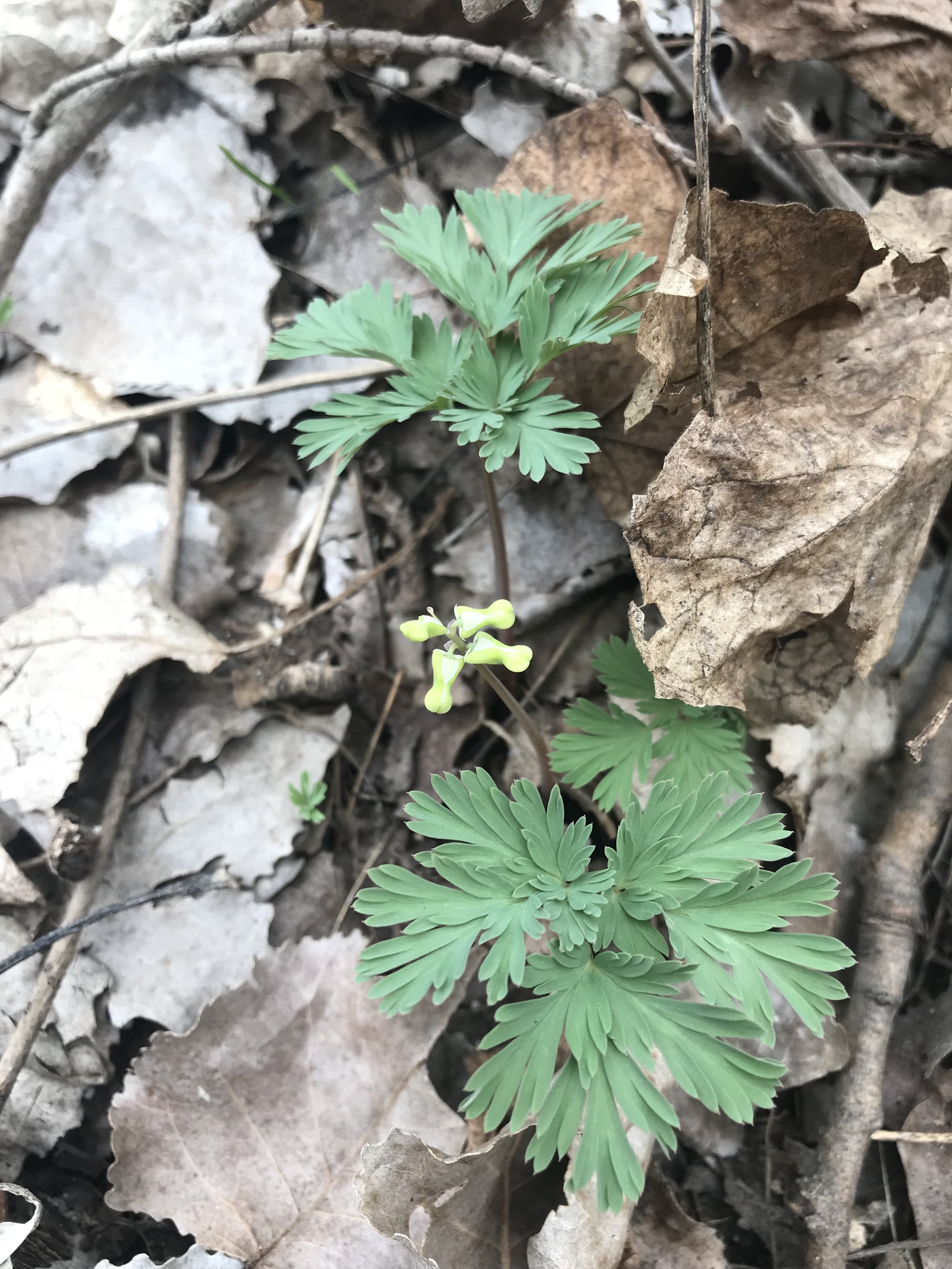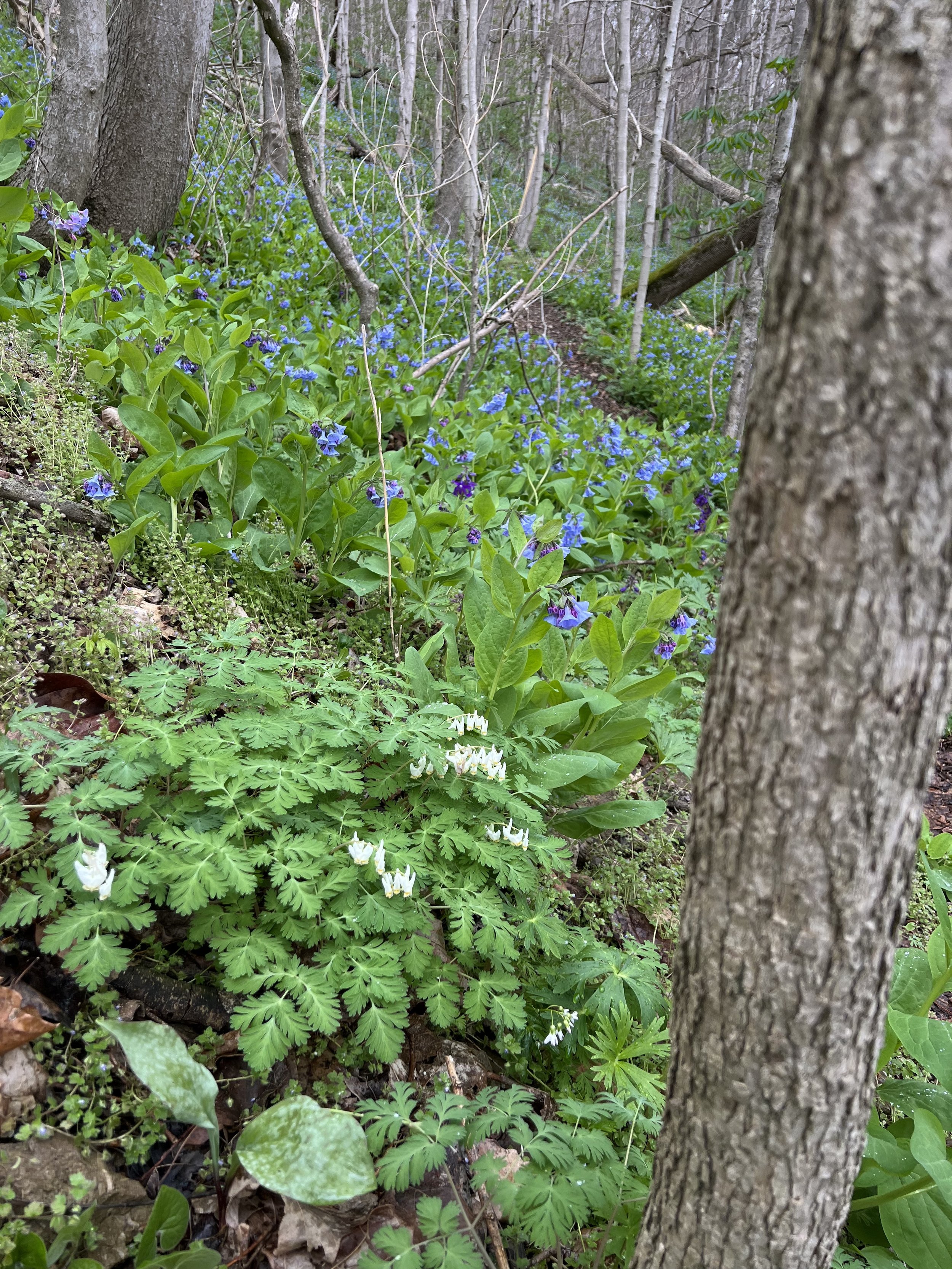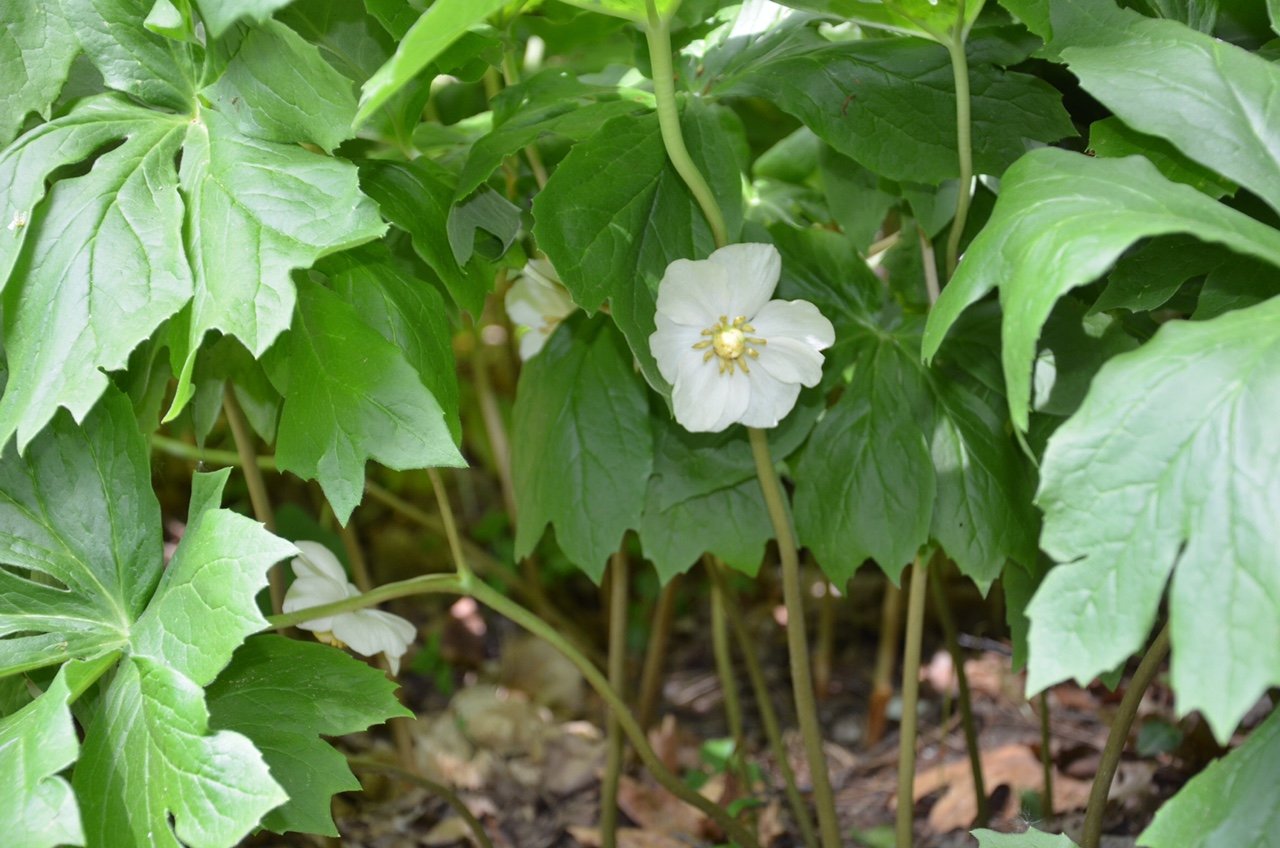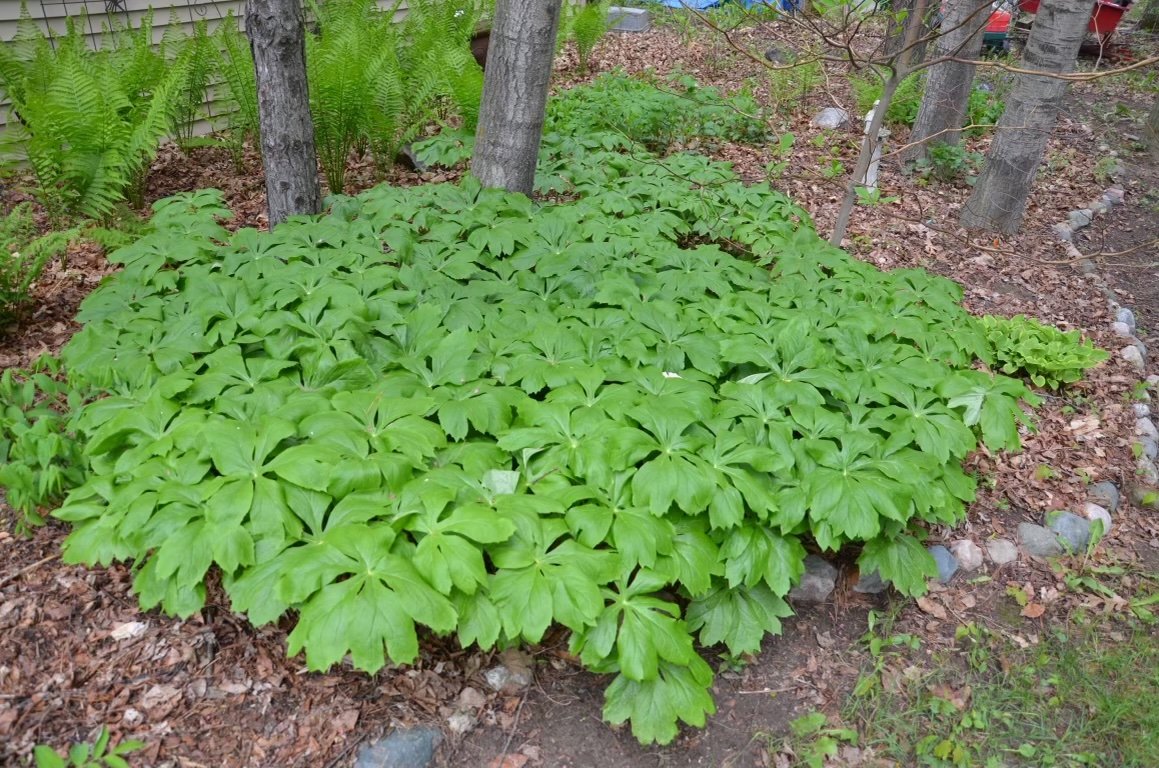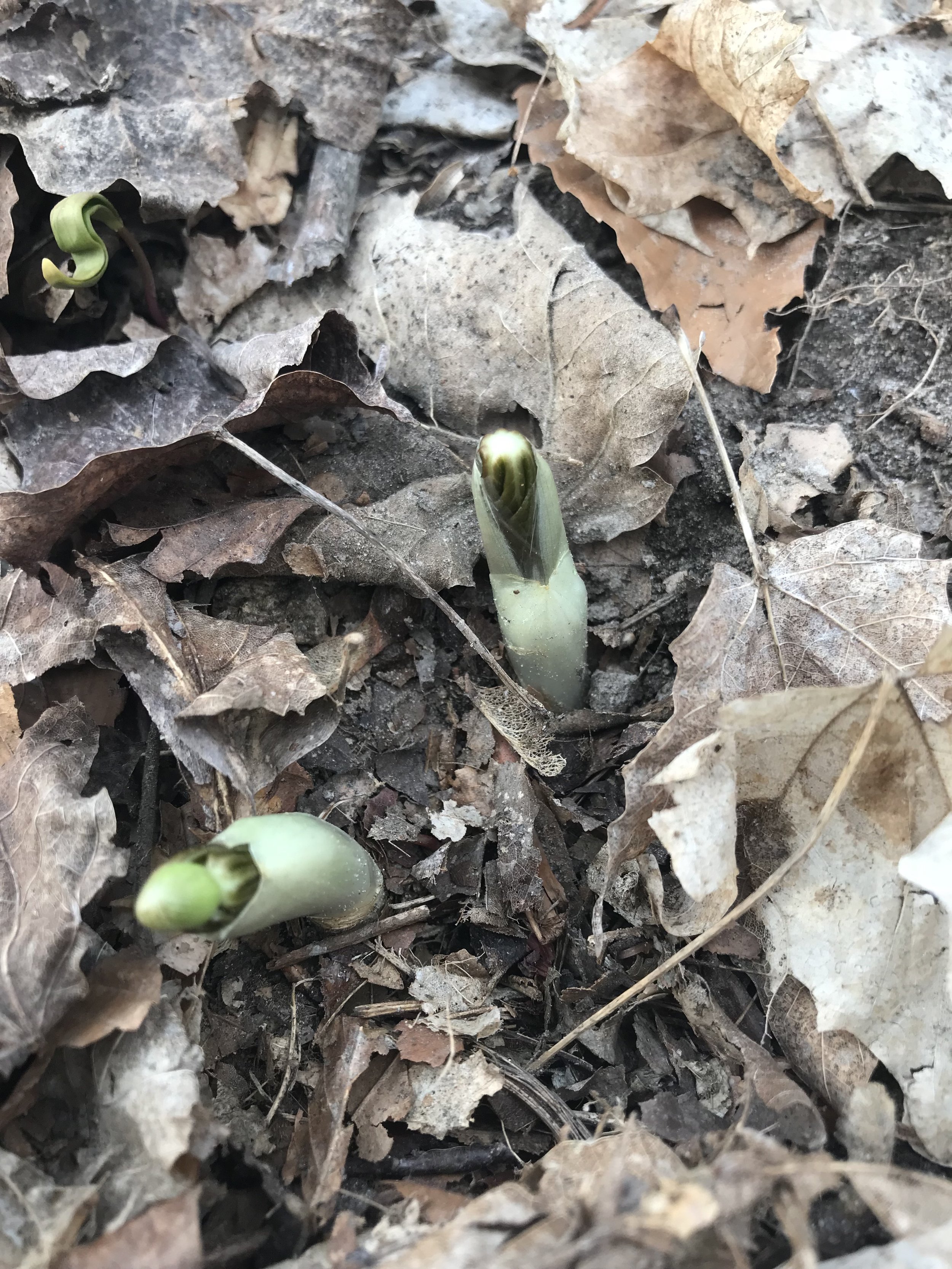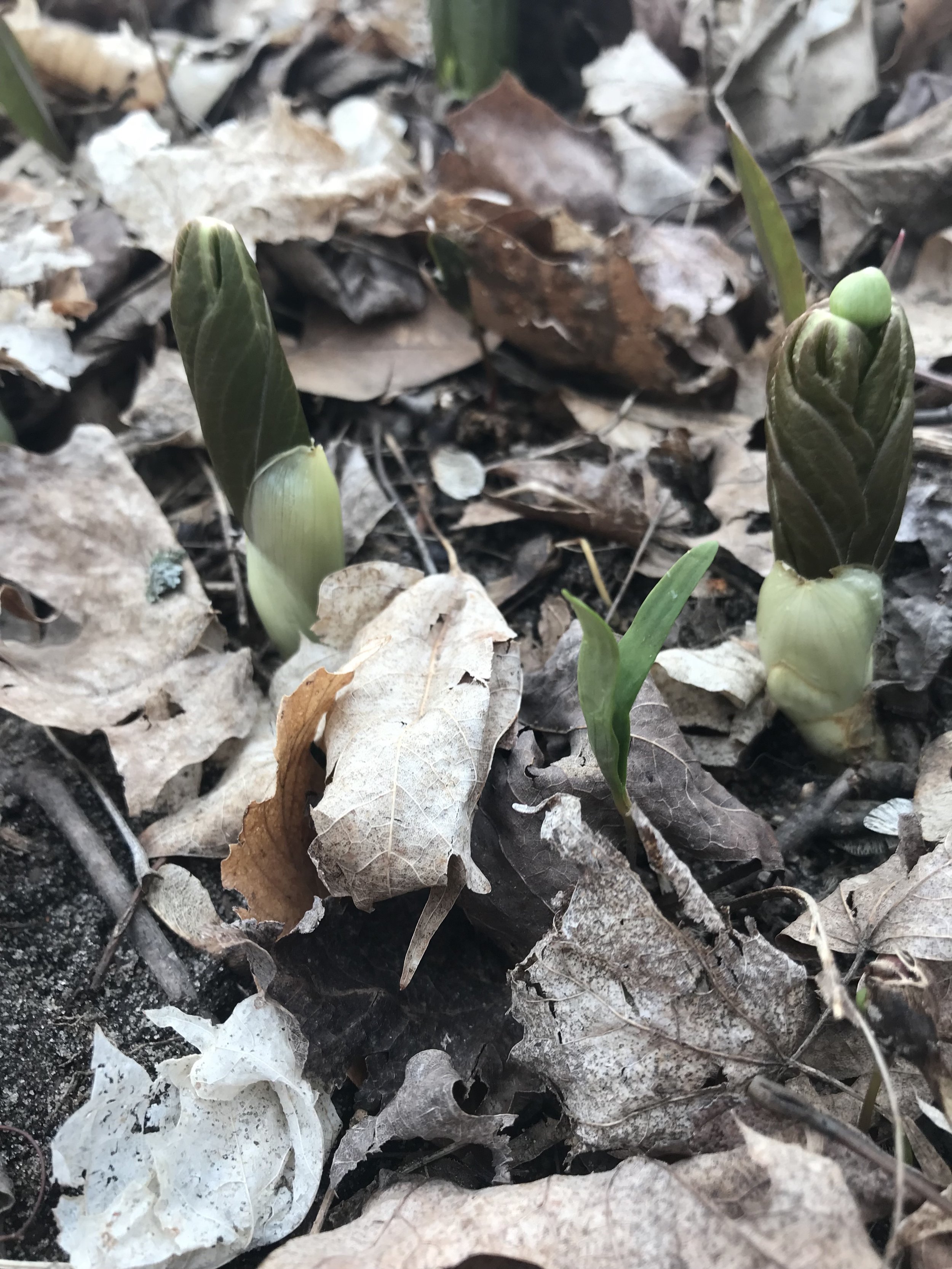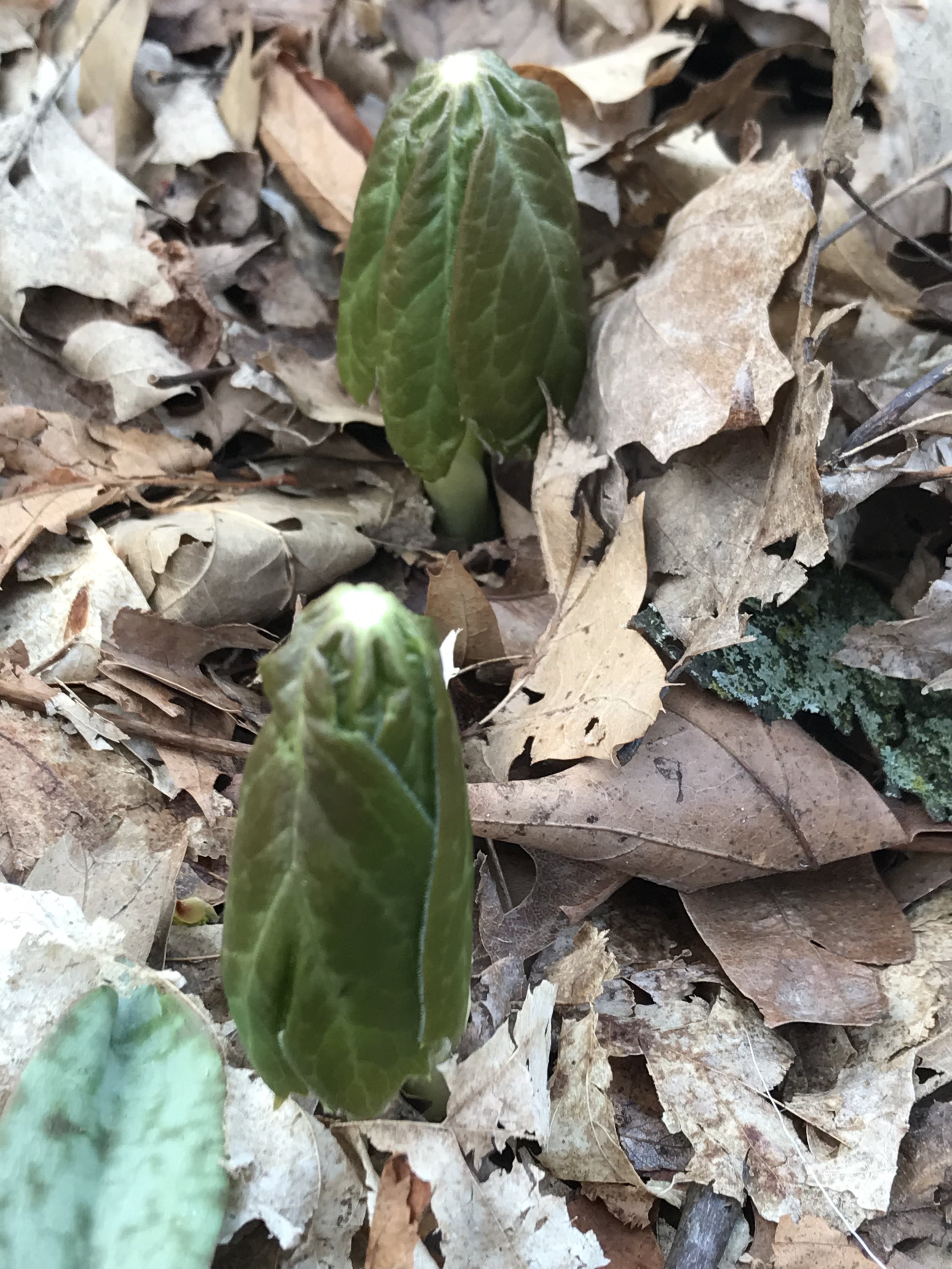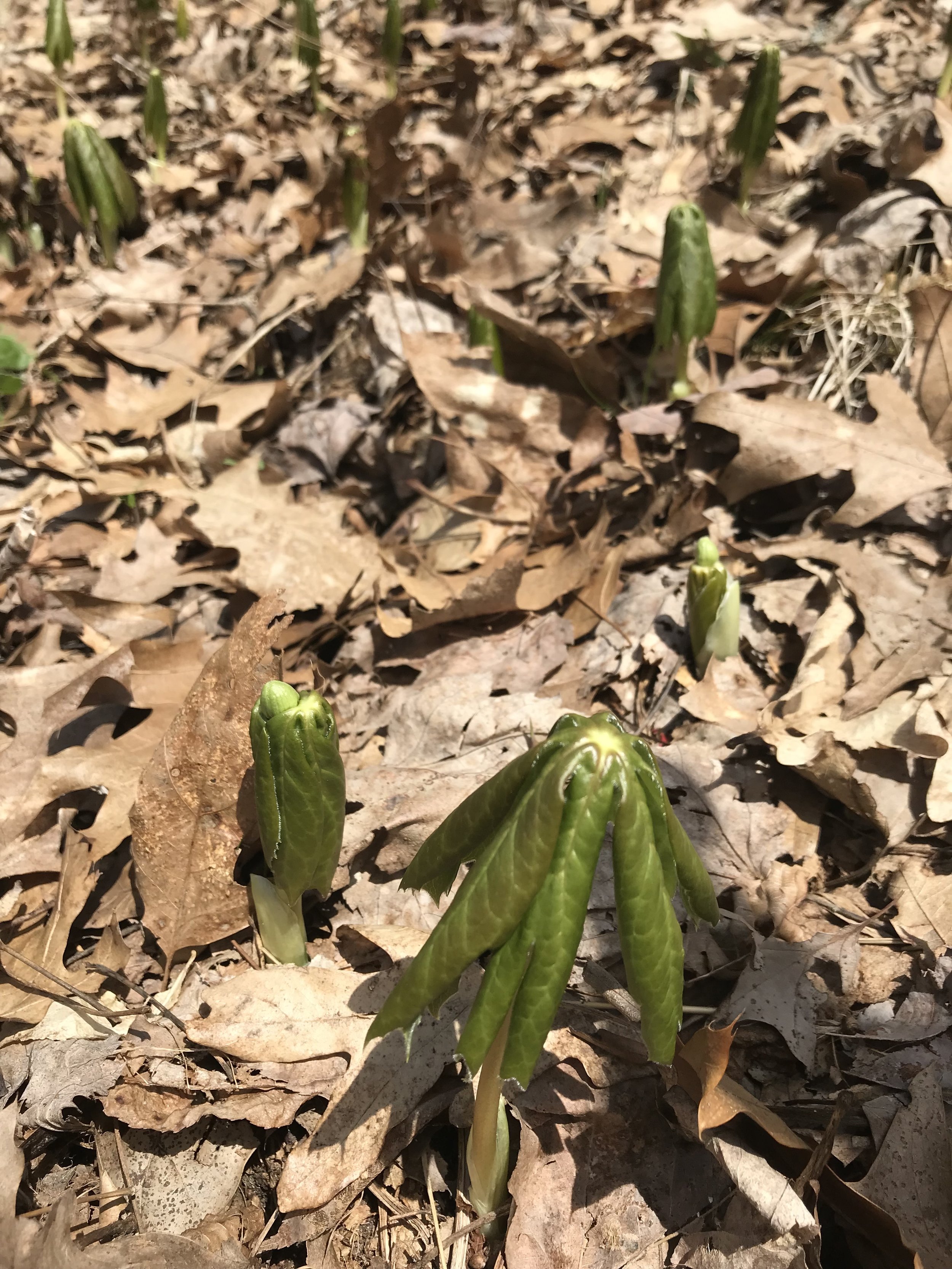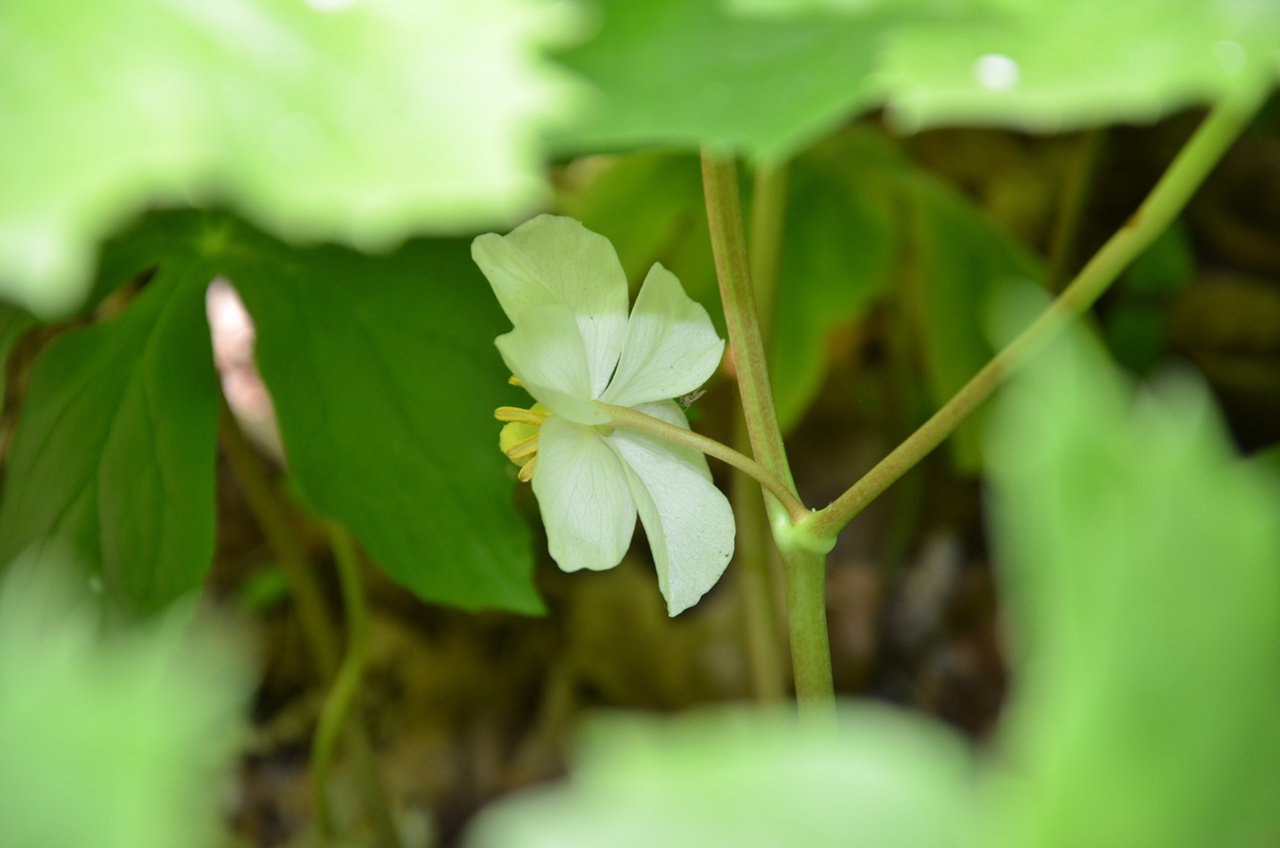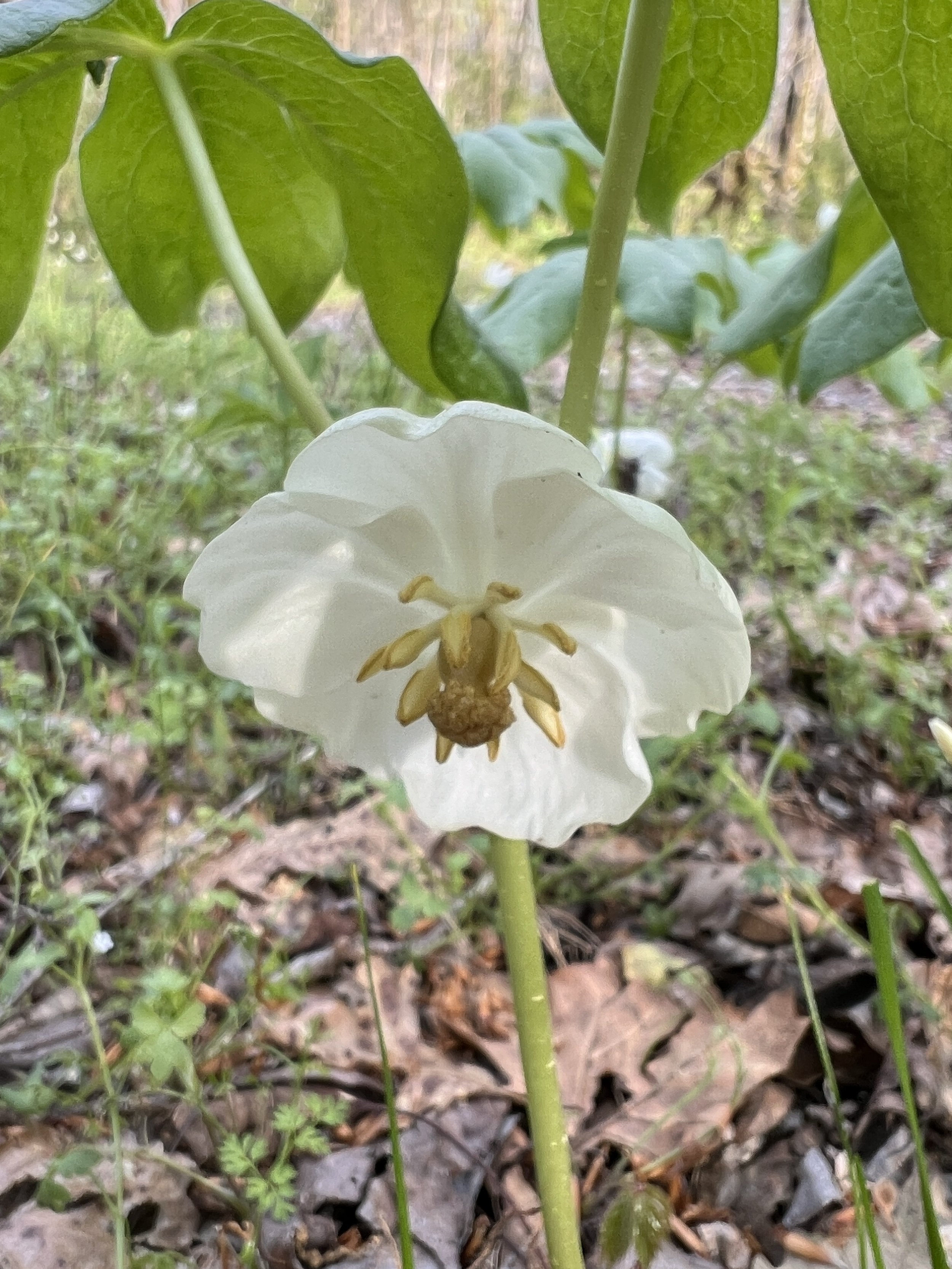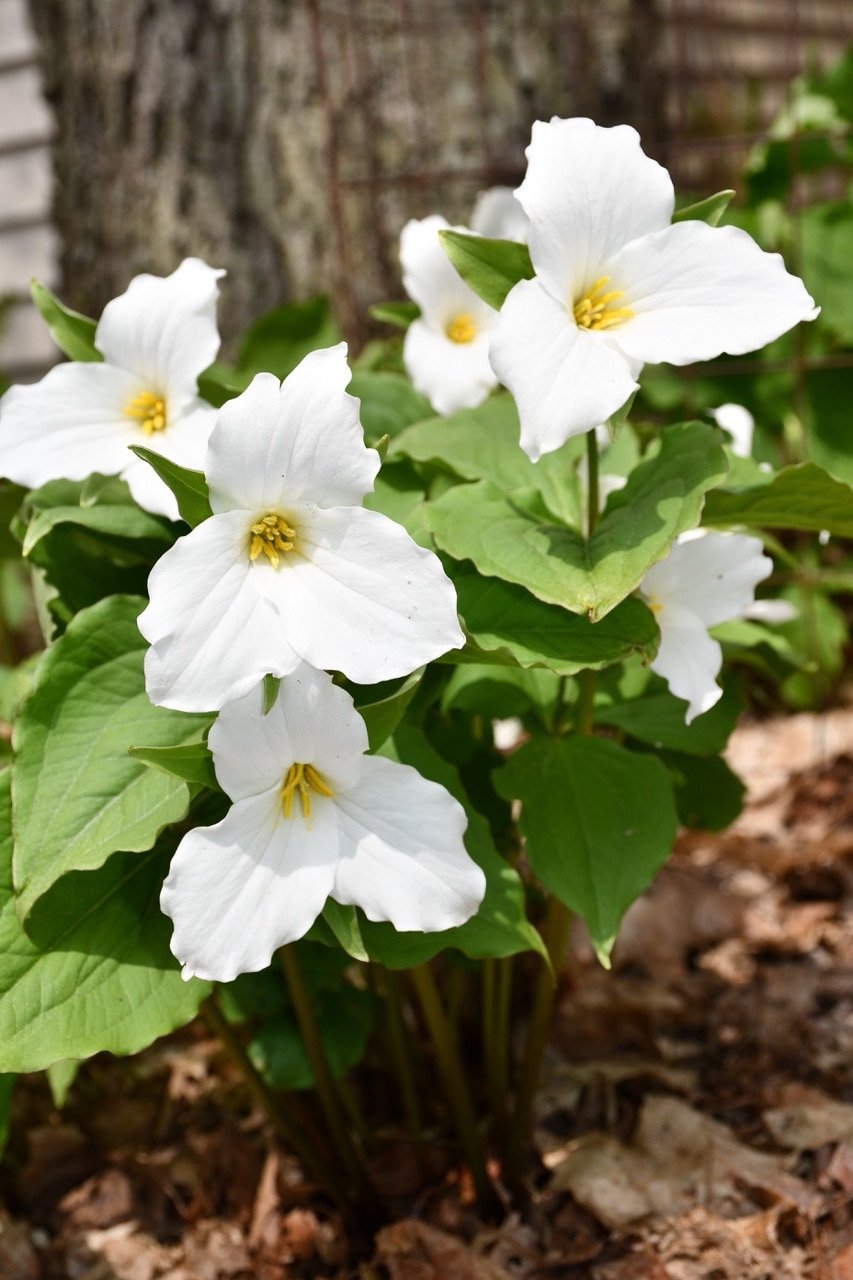 Image 1 of 12
Image 1 of 12

 Image 2 of 12
Image 2 of 12

 Image 3 of 12
Image 3 of 12

 Image 4 of 12
Image 4 of 12

 Image 5 of 12
Image 5 of 12

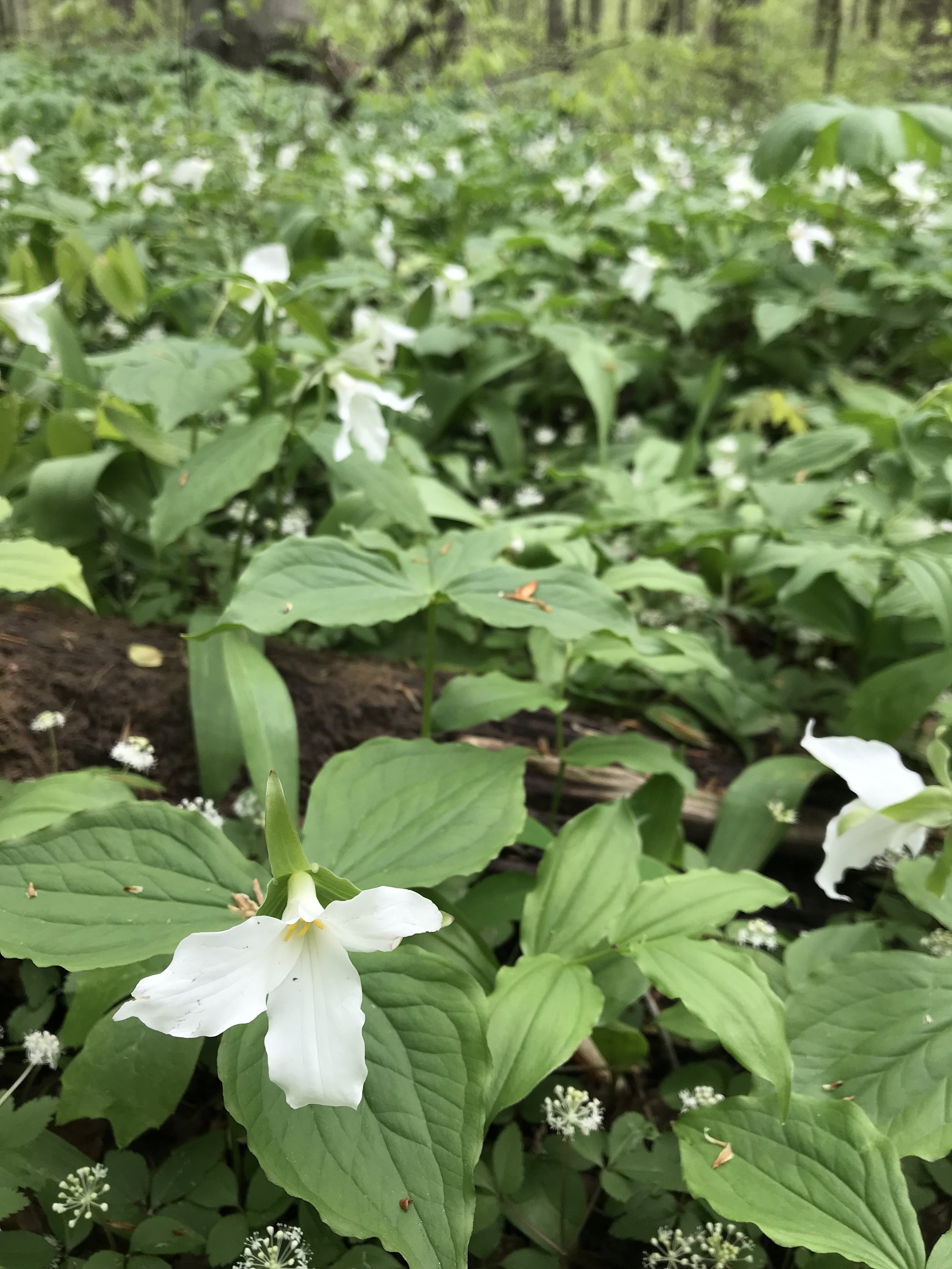 Image 6 of 12
Image 6 of 12

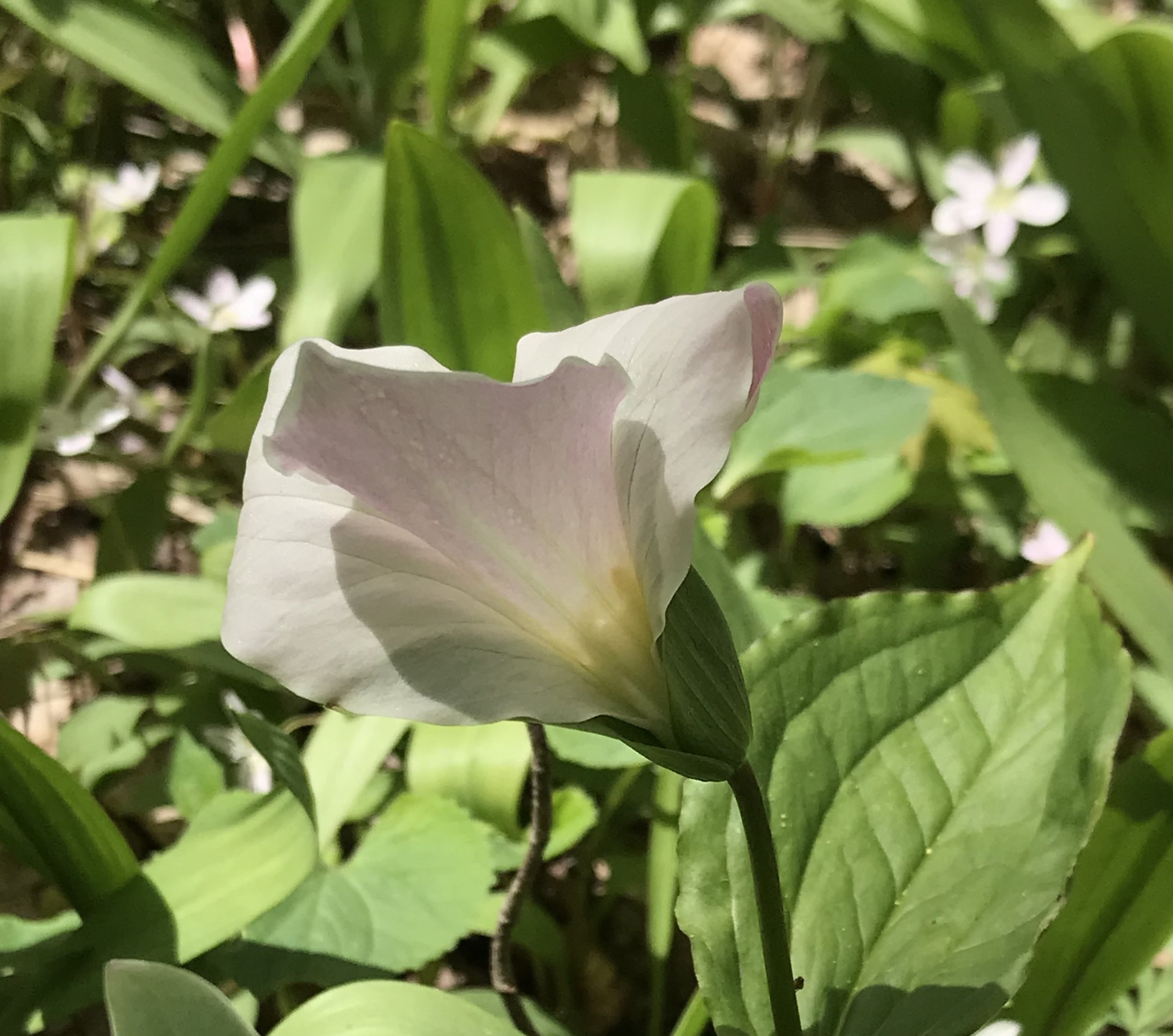 Image 7 of 12
Image 7 of 12

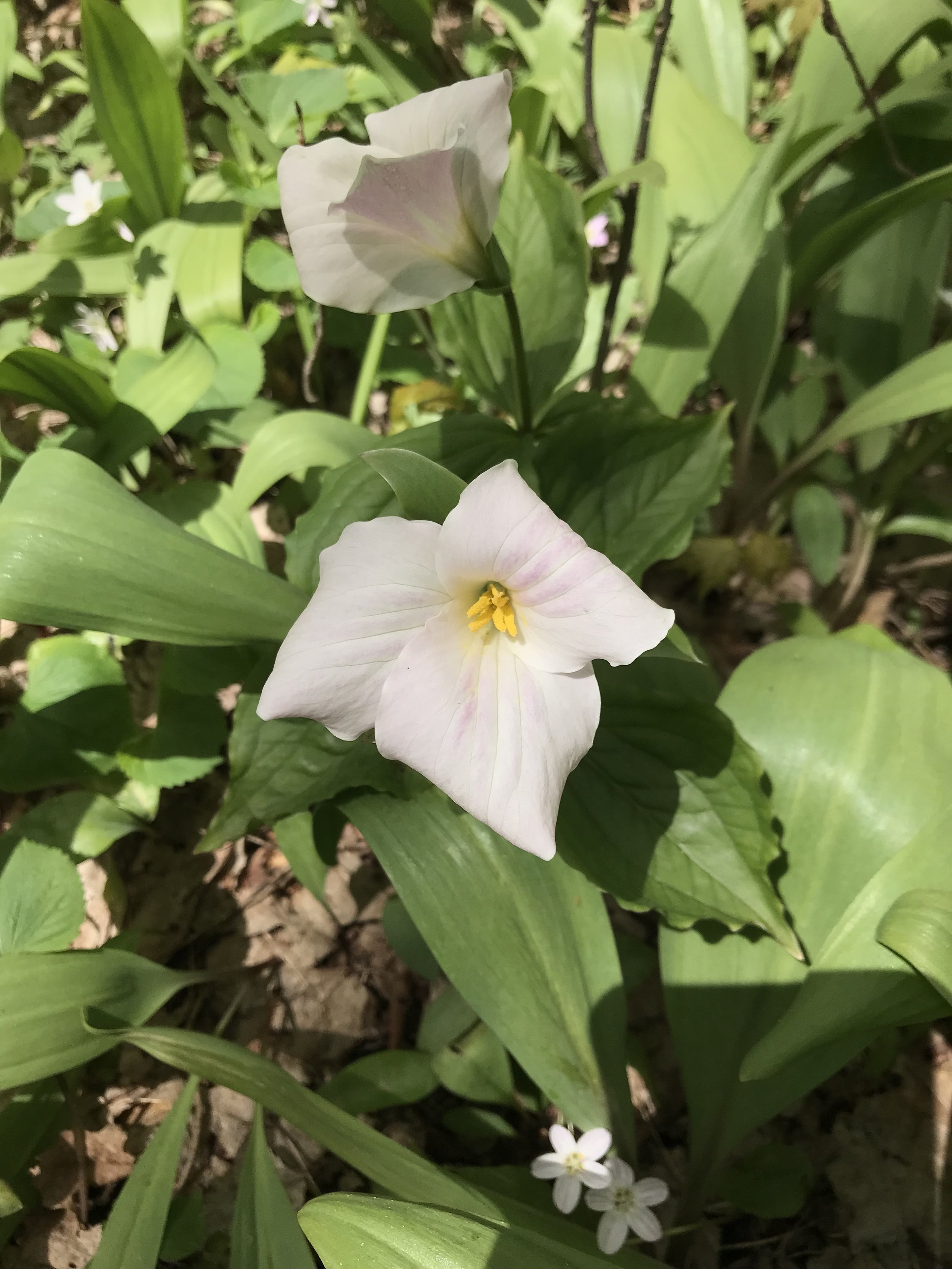 Image 8 of 12
Image 8 of 12

 Image 9 of 12
Image 9 of 12

 Image 10 of 12
Image 10 of 12

 Image 11 of 12
Image 11 of 12

 Image 12 of 12
Image 12 of 12













Great White Trillium (Trillium grandiflorum)
Trillium grandiflorum is our most popular plant, always in short supply, partly because they take 3-4 years to grow to the point where they can be sold. Plants may first flower in years 5-7.
This plant consists of a whorl of three leaves. A stem arises from the center bearing the large white flower and consists of three veined petals and yellow stamens with lots of pollen are also visible. Behind the petals are three green sepals (modified leaves).
The flower usually leans to one side, but does not droop (in comparison to drooping trillium and nodding trillium—these have smaller flowers too). Flowers can be up to four inches across. The size and the brilliant white color means that you can often see a patch of trillium while driving along the highway in rich woodlands and on hillsides.
The contrast of the green and white in a large patch of trillium is stunning. Some of the best displays I have seen are at Aman Park near Grand Rapids, in the rich woodlands in SW Michigan and in the upper peninsula.
As flowers age, they usually turn light pink and sometimes progress to a dark pink (see photos). The petals will fall, leaving behind the sepals with the developing ovary. Leaves will persist for a while before dying completely back.
This plant has been under pressure as people illegally dig them from the wild. Please buy these at a reputed, licensed nursery!
A NOTE ABOUT TRILLIUM: If we have 2.5 inch pots available, those are mostly 3 year old plants. Four year old plants will be in quarts, as will flowering trillium.
Great White Trillium (Trillium grandiflorum)
Michigan Flora reference page for state distribution: Trillium
height: 8-15 inches
bloom time: April-June
soil: medium, rich
sun: sun in early spring, shade in summer
plant spacing: 12”
flower: white-dark pink (as it ages)
life cycle: perennial
family: Trilliaceae
seed source: Michigan
Trillium grandiflorum is our most popular plant, always in short supply, partly because they take 3-4 years to grow to the point where they can be sold. Plants may first flower in years 5-7.
This plant consists of a whorl of three leaves. A stem arises from the center bearing the large white flower and consists of three veined petals and yellow stamens with lots of pollen are also visible. Behind the petals are three green sepals (modified leaves).
The flower usually leans to one side, but does not droop (in comparison to drooping trillium and nodding trillium—these have smaller flowers too). Flowers can be up to four inches across. The size and the brilliant white color means that you can often see a patch of trillium while driving along the highway in rich woodlands and on hillsides.
The contrast of the green and white in a large patch of trillium is stunning. Some of the best displays I have seen are at Aman Park near Grand Rapids, in the rich woodlands in SW Michigan and in the upper peninsula.
As flowers age, they usually turn light pink and sometimes progress to a dark pink (see photos). The petals will fall, leaving behind the sepals with the developing ovary. Leaves will persist for a while before dying completely back.
This plant has been under pressure as people illegally dig them from the wild. Please buy these at a reputed, licensed nursery!
A NOTE ABOUT TRILLIUM: If we have 2.5 inch pots available, those are mostly 3 year old plants. Four year old plants will be in quarts, as will flowering trillium.
Great White Trillium (Trillium grandiflorum)
Michigan Flora reference page for state distribution: Trillium
height: 8-15 inches
bloom time: April-June
soil: medium, rich
sun: sun in early spring, shade in summer
plant spacing: 12”
flower: white-dark pink (as it ages)
life cycle: perennial
family: Trilliaceae
seed source: Michigan
Note: You should consider “leaving the leaves” in the fall. This is because various insects and frogs use leaves as a wintering shelter. Additionally, if I rake leaves off the lawn, I pile them in a couple of locations to be used in my yard the following season for plants that need rich soil and decaying leaves.

